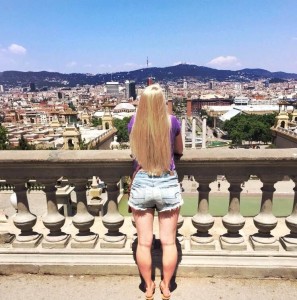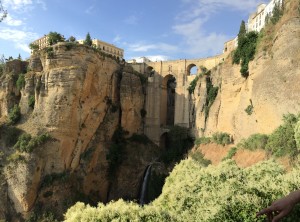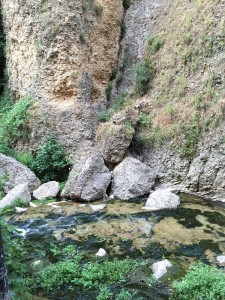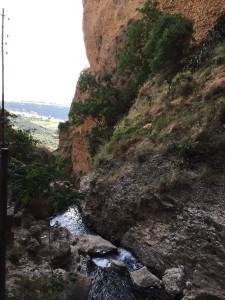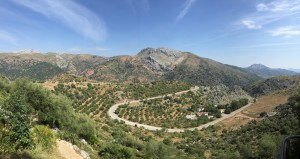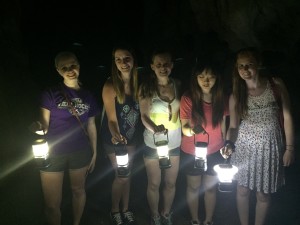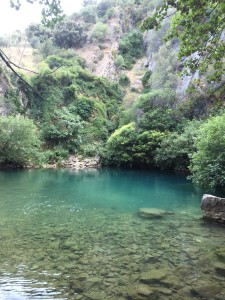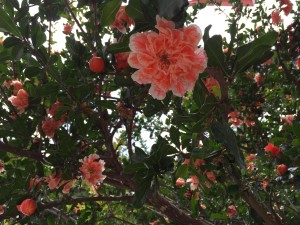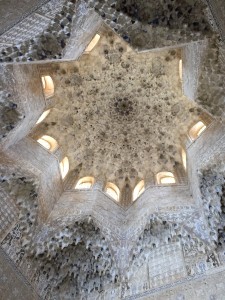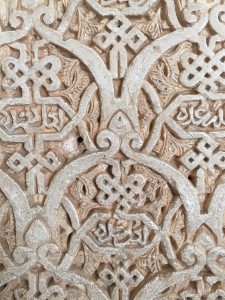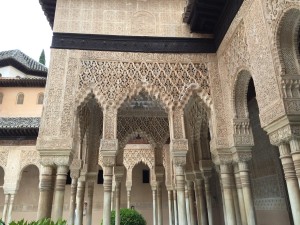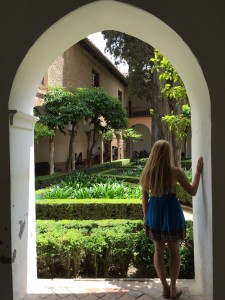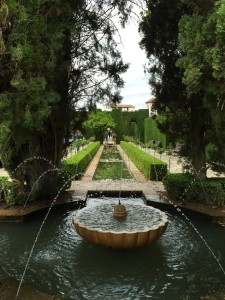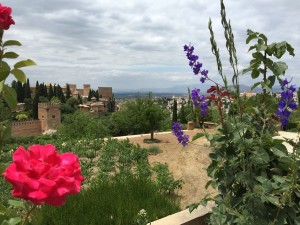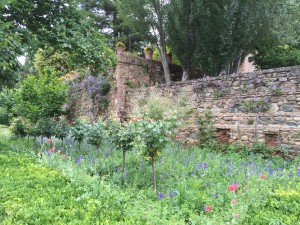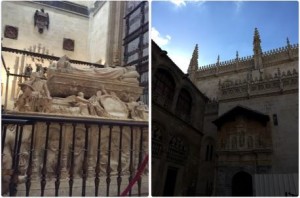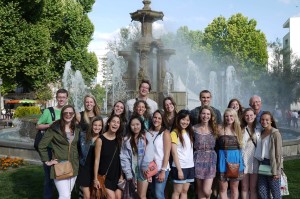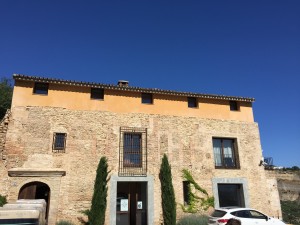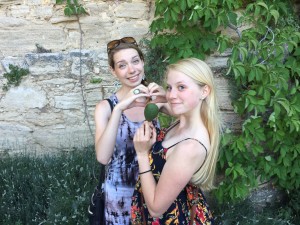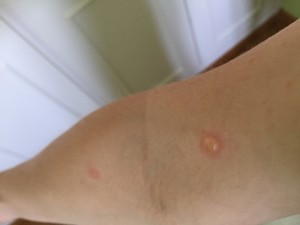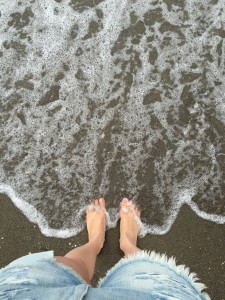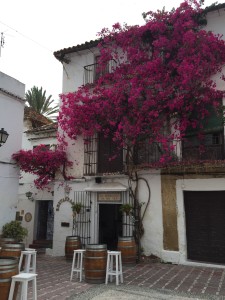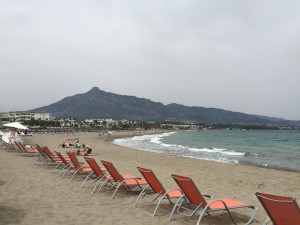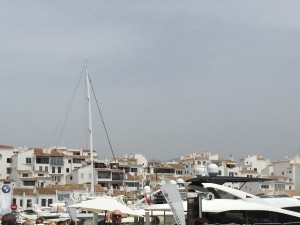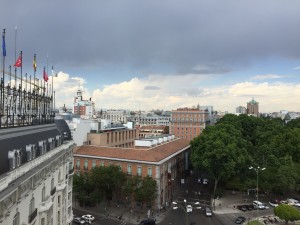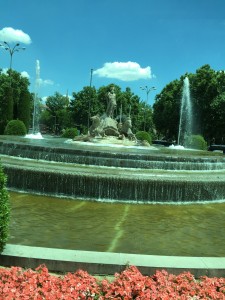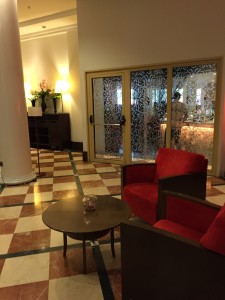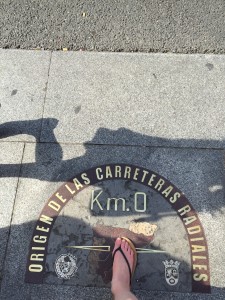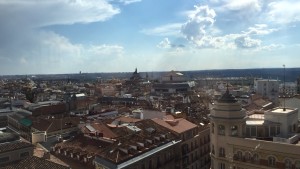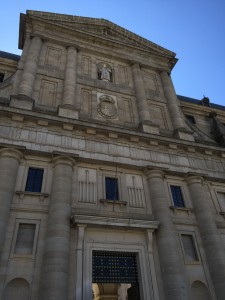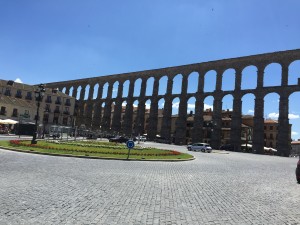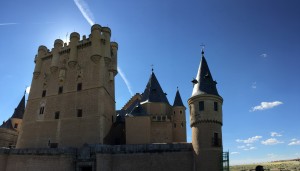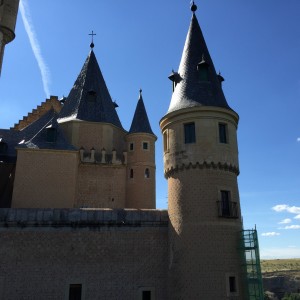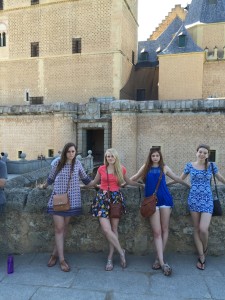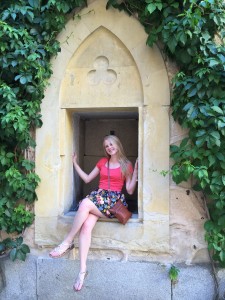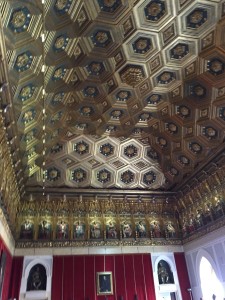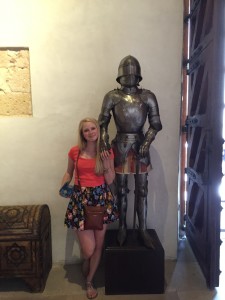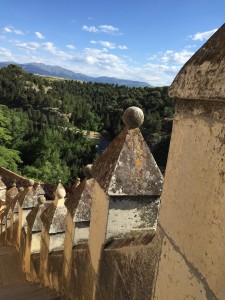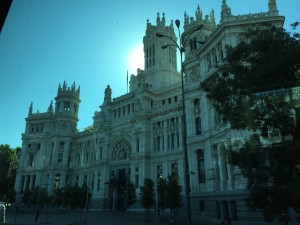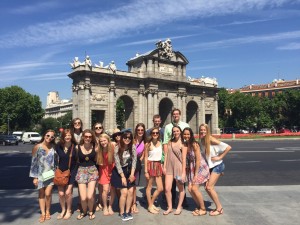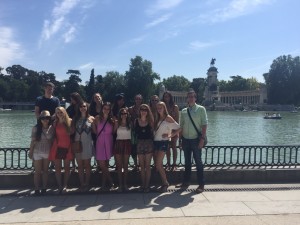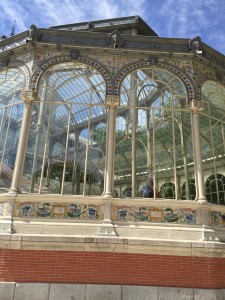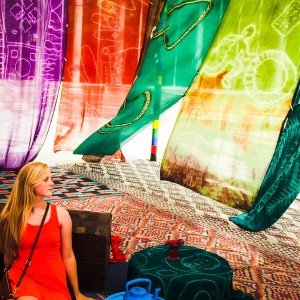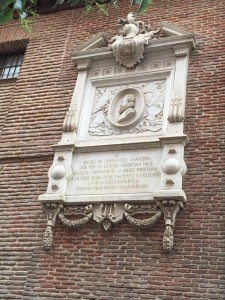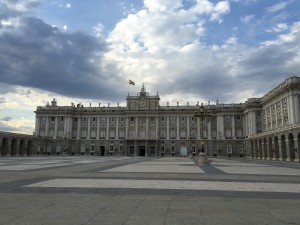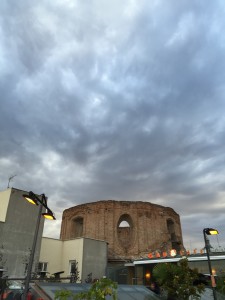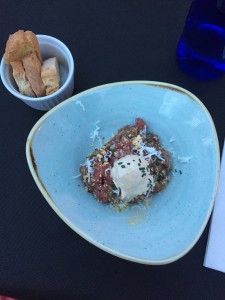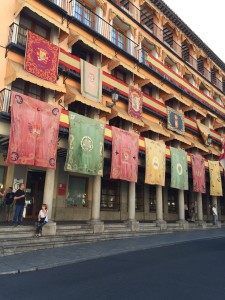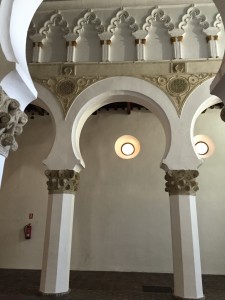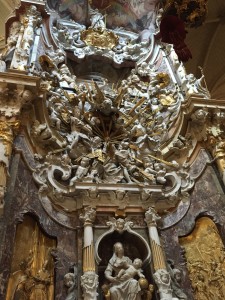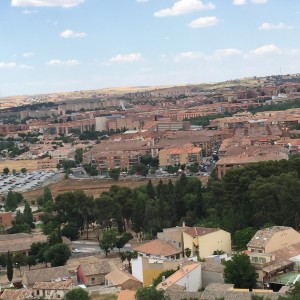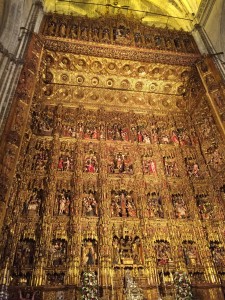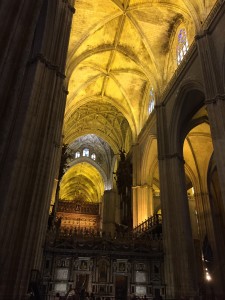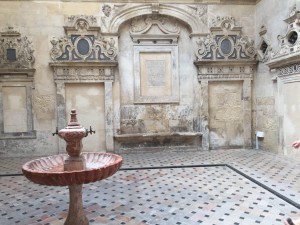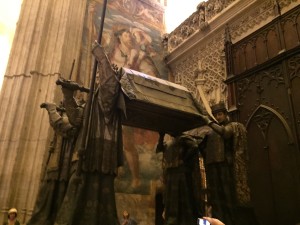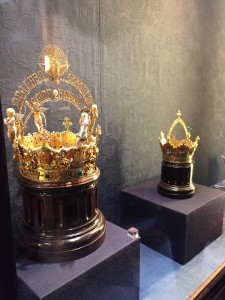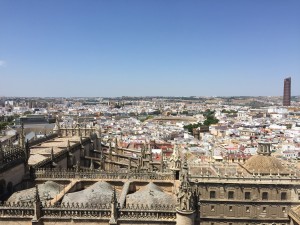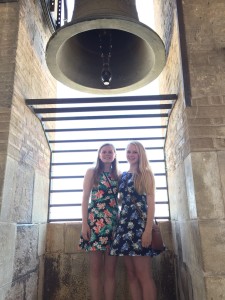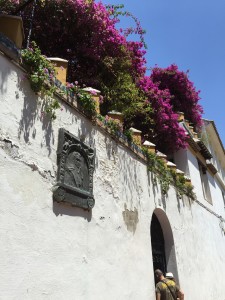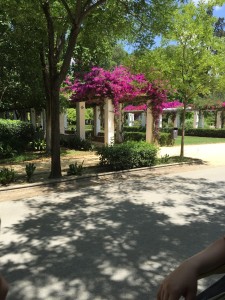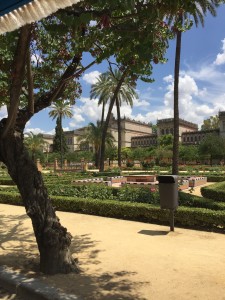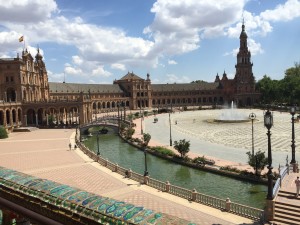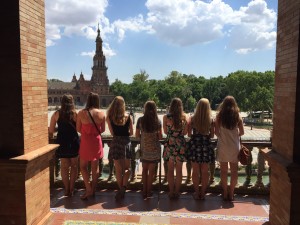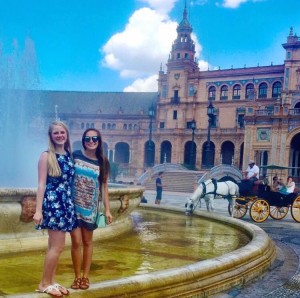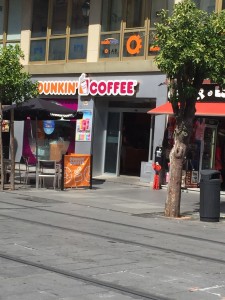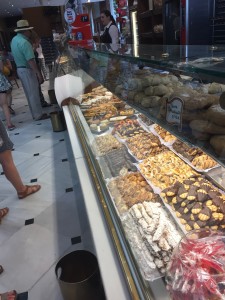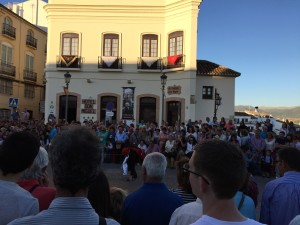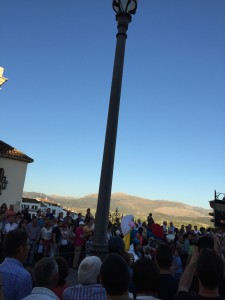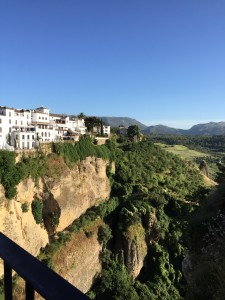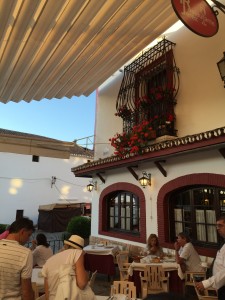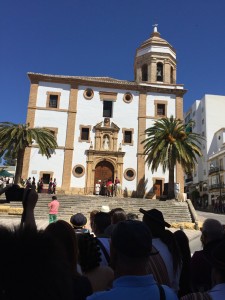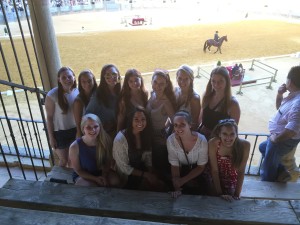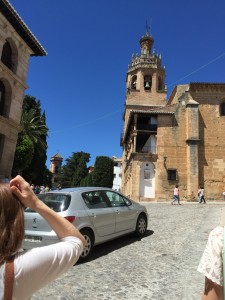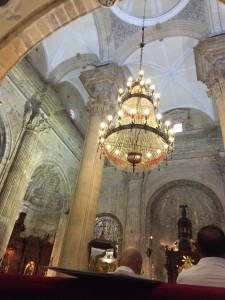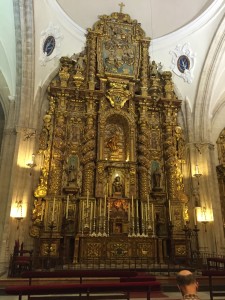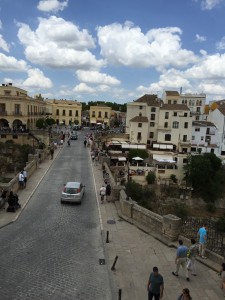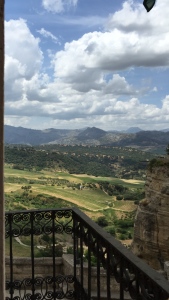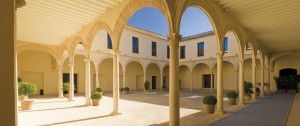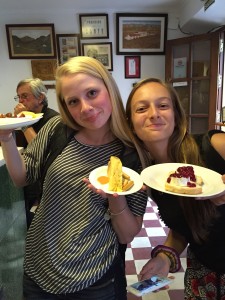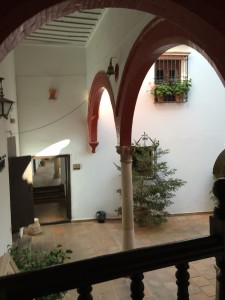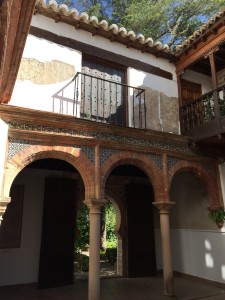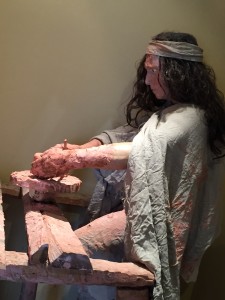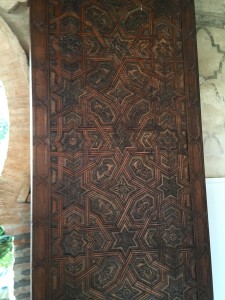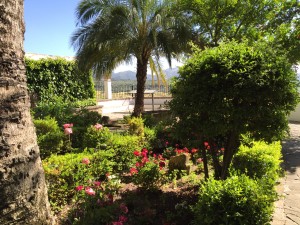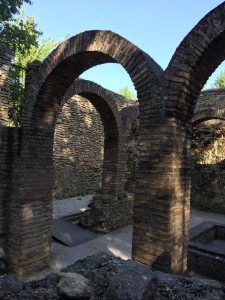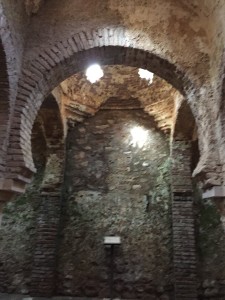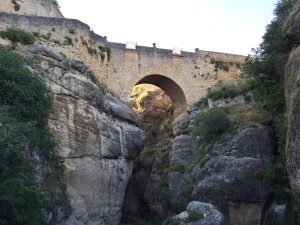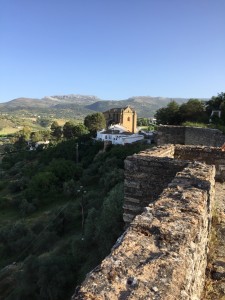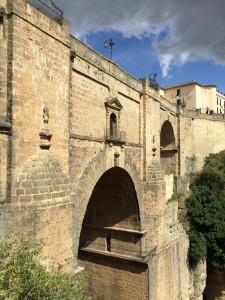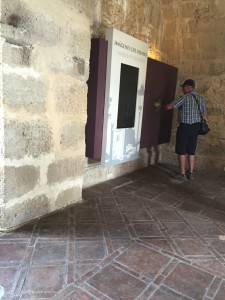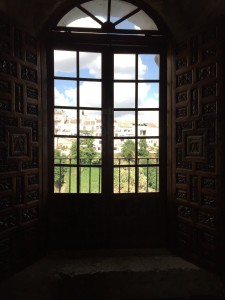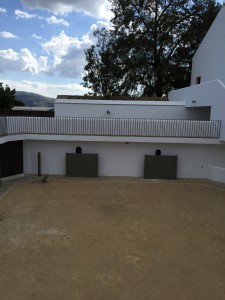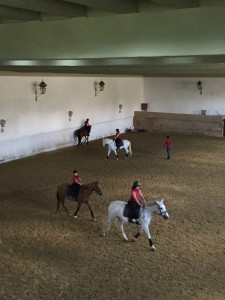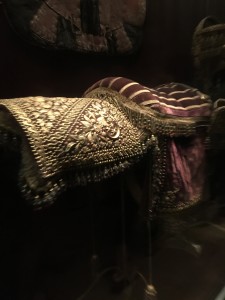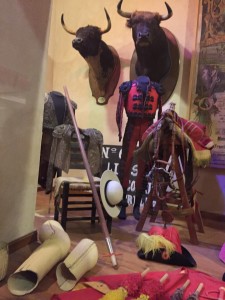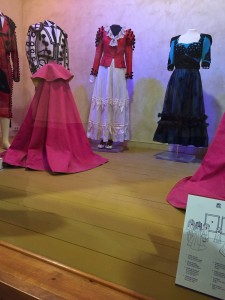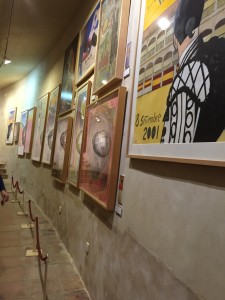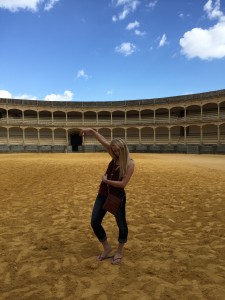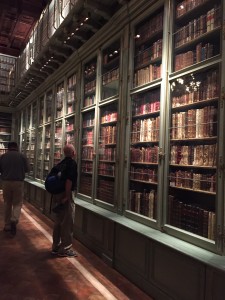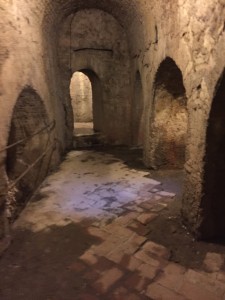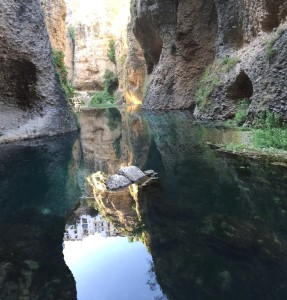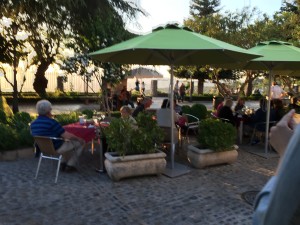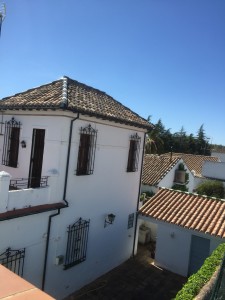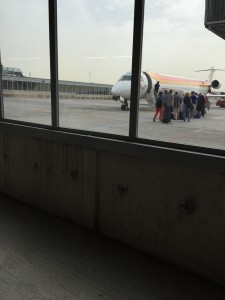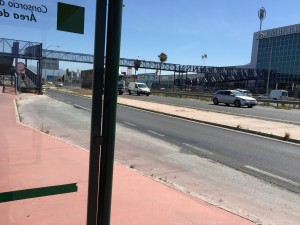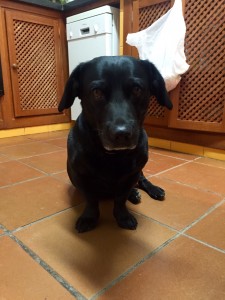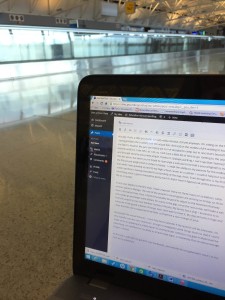“I’m laying here in my bed and it is 8:09 am on June 17th and I am not ready. I am not ready to leave this place of laughs, this place of never ending learning and ceaseless smiles. Sure, today is the day. But I am in no way prepared to leave.
Where did the time go? Didn’t I just get here? Didn’t I just get off the plane, tackle the footbridge, and meet my host family? I know what it feels like to be attached to a person, but to a place is a different thing entirely. And I look around at my suitcases sitting in my empty room and I cannot help but to feel so sad. I will never sleep here again. I will never wake up to the view outside of my bedroom window or get ready for school or eat breakfast over Spanish conversation again. How can something be so final?
I look back on the month here and I know that I wouldn’t trade it for anything. We have become a group of 16 amigos and the only regret I have is that there wasn’t more time.
So goodbye comfy and squeaky bed of mine where I woke up every day to see the caricature of my host brother on the wall. Goodbye strange palm and evergreen tree combos outside of my window next to the neighbors. Goodbye Calle La Bola and the walks to school we took every day. Goodbye Puente Nuevo and the countless pictures we posed for in front of it. Goodbye shower head that I held between my knees and goodbye to the after school lunches with endless laughs. Goodbye bocadillos of tortilla and midnight natillas. Goodbye pulpos. Goodbye host fam. Goodbye, Ronda. I hope to see you soon.”
What a day this was. It’s hard to believe that it’s already been a month since I wrote it, since I bought an extra suitcase that morning because I had no more room in my own, since I said goodbye to my teary host family and got on the bus to the airport. This time last month, I was in Barcelona with my dad waiting for my mom and brother to join us so that we could go on a cruise through the Mediterranean. We’d been exploring in the gap of days we had between the end of my program and the cruise, so it wasn’t hard to see that Barcelona is a beautiful city. We saw a handful of its best attributes—Sagrada Familia, Montjuïc, and the Olympic Stadium to name a few—but it wasn’t the Spain that I’d gotten used to over the past month. The main differences were the language and the climate, to which one may say, “But how? Spain is still Spain.” And while this is true, the differences remained. Barcelona is the capital of Catalonia, a province where they speak a different one of the four official languages of Spain called Catalan. It’s a mix between Spanish and French, but for the most part was so foreign to me. There were also deciduous trees like those in Pennsylvania, something that southern Spain lacks. There weren’t as many, but it was definitely nice to see them again as weird as it was to me that they were there. How could I have gotten used to something to only be thrown off after going a few hundred miles north? It just goes to show that you’re always kept on your toes when traveling.
Reading menus wasn’t all too difficult, though. I found that the majority of the words sound similar and are spelled differently, or have the same Latin route. Simply put, we managed just fine. Another thing about Barcelona is that a huge number of people speak English, so more often than not that was the language of choice when someone local would speak to us. This was odd to me. I felt like it wasn’t really fair to the locals to have to default to something foreign to them. In the US, almost 100% of the time we approach people in English. But as I traveled to other countries later on (such as France and Italy), it was the same thing in a large majority of places. I was especially surprised that this was the case in the first shop we entered in France because the common stereotype is that they won’t really speak anything other than French to Americans and I was curious to see if it was actually true.
When I visited Cannes, my parents and I went into a pharmacy on a small side street to buy a pair of fingernail clippers (strange, I know, but we needed them and this is how the story goes). I myself know all of three words in French, max. My parents are about on the same page as I am. So picture this: my dad goes to the counter, hands the cashier the nail clippers, and she rings them up and tells him the total—in French, of course. And without skipping a beat, my dad replies matter-of-factly with, “I have no idea what you just said,” as if she would understand him either. She then wrote the price down and he proceeded to pay without a problem, but to me the encounter was unintentionally funny. See, I’ve noticed that people do this thing–and it’s actually very common, since there’s really nothing else to do–where they break out into their own language when it’s very clear that the other person knows not one word of it because it’s the only thing they know how to do. Think about it: if no one ever knew someone else’s language, how successful would we be? So as funny as it was to see, it shows us that we all have a little bit of learning to do and that being culturally aware of differences is really important in today’s world. With such a huge amount of travel in both leisure and business, we’re bound to run into some gaps. And sooner than later, those who can bridge them will become indispensable.
And even though I hadn’t really thought of myself as different between pre and post Spain beforehand, I began to see it at this point. Pre-Spain, I would’ve probably felt that secondhand embarrassment that we all know and love. But because I muddled through so many similar scenarios, I looked at it in a different light. It validated my reason for coming abroad even more: I was there to bridge the gap.
Continuing with change, the reverse culture shock on the way back home was in no way as intense as I imagine that it is for other people. I relayed experiences to my family, sure, but I didn’t realize that the way I saw things was no longer entirely the same until I was back home. I went on my Americanized cruise ship while continuing to visit foreign lands, yet slowly and surely got reused to the United States swing of things without being in the homeland itself. This is why I say that it wasn’t the same for me as it most likely was for the people that I went with on the trip. For lack of a better word, I had a halfway house. Even with that being said though, certain things were bound to stick out.
On the ship, my life switched from Spanish back to English. I no longer ordered food at a restaurant in Spanish, nor did I use it to ask for directions to a place or say ‘Gracias’ or ‘Por favor’. I’d be lying if they didn’t slip out from time to time out of my newly formed habits. When they did, I’d get a strange look from both whoever I was with and whoever I was saying it to, not even understanding why at first. And instead of being frustrated, it was funny to me. Like “Oh, wait, I don’t need to use this here. Whoops!” On one of the first nights of the cruise, we went to a Cirque show and were seated next to a family from northern Spain. Even though it had only been a few days, hearing Spanish again and speaking it back was cool to do in a setting outside of the one I had been in, complete with an accent from a different part of the country. Secretly, I was so proud of myself to understand it as well as I did because I know that I wouldn’t’ve prior to the trip. Noting visible progress was awesome; it really showed that the hard work we’d put in all month in classes paid off.
Throughout the rest of that week, I saw more than I ever imagined I’d be able to in such a short time: Pompeii, the Colosseum, David, and then some. I ate homemade Italian pasta and walked the streets of the Rome. I stood and stared in awe at the Sistine Chapel and got a postcard with the pope giving a thumbs up to remember it by. A year ago, I never would’ve pictured my life as it is now. The ship gave me new friends and experiences that were the icing on the cake to a once in a lifetime experience and it was the perfect high note to wrap up half a summer of adventure.
And then, the USofA. Once my plane touched down, I was reunited with all of the grass and green that I’d so dearly missed (Seriously. I never knew that I could feel deprived of grass but it’s a real thing.) There were English signs. And English on the radio. And English songs! Have you ever not realized that you missed something until you have it again after not having it for a while? It’s such a strange feeling. It’s like walking into a room and seeing something and saying “Oh, there you are.” Since being back, I appreciate things more. This many days in, I still look at the tree covered mountains that have always been so ordinary to me and now recognize them as being symbolic of home. I appreciate the stoplights instead of roundabouts and I love that people walk on the right side of the street. I feel like I see things differently than I had in the past. There’s this quote I read before I left that sums it up pretty well that goes like this:
“Why do you go away? So that you can come back. So that you can see the place you came from with new eyes and extra colors. And the people there see you differently, too. Coming back to where you started is not the same as never leaving.”
But I miss the daily tortilla española. And I miss walking down Calle La Bola every day. I miss buying tarta de queso at the grocery stores and I miss laughing over Spanish slip ups. I miss meeting in the plaza for dinner and I miss chupitos on the house after we finished. I miss La Lechuguita and Benito’s. I miss my Spanish teachers. I miss our Spanish school. I miss the cow on the cliff. I miss my host family. I miss my second home.
So would I do it again? In a heartbeat. 18 cities and 4 countries later, I cannot even begin to put into words the magnitude of change in myself this past month and a half. I have learned to appreciate the beauty in the small and the comfort of the familiar. I wouldn’t trade the memories made for anything. For those who are reading that will venture out and onto their own study abroad experiences or even this one in the coming year, be forewarned: these are not for the faint of heart. In addition to the adventures, you will have to work—it’s still school, they’re still grades, and they still matter. It will not be easy. But it will be one of the best experiences of your life, and it is so worth it.
Location: Barcelona


